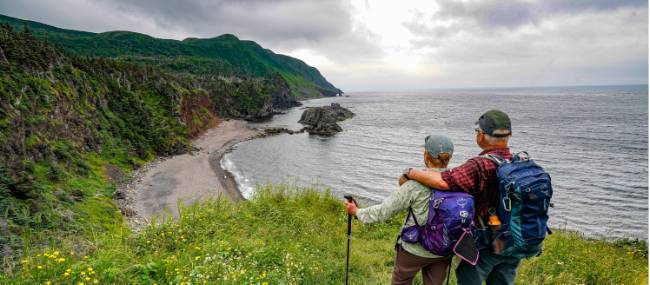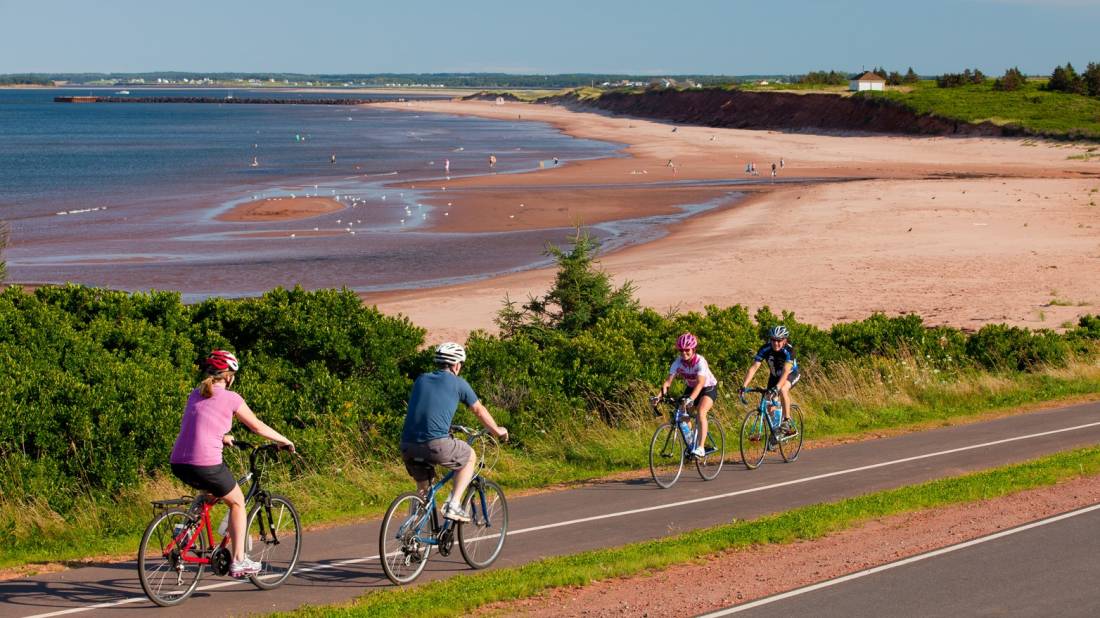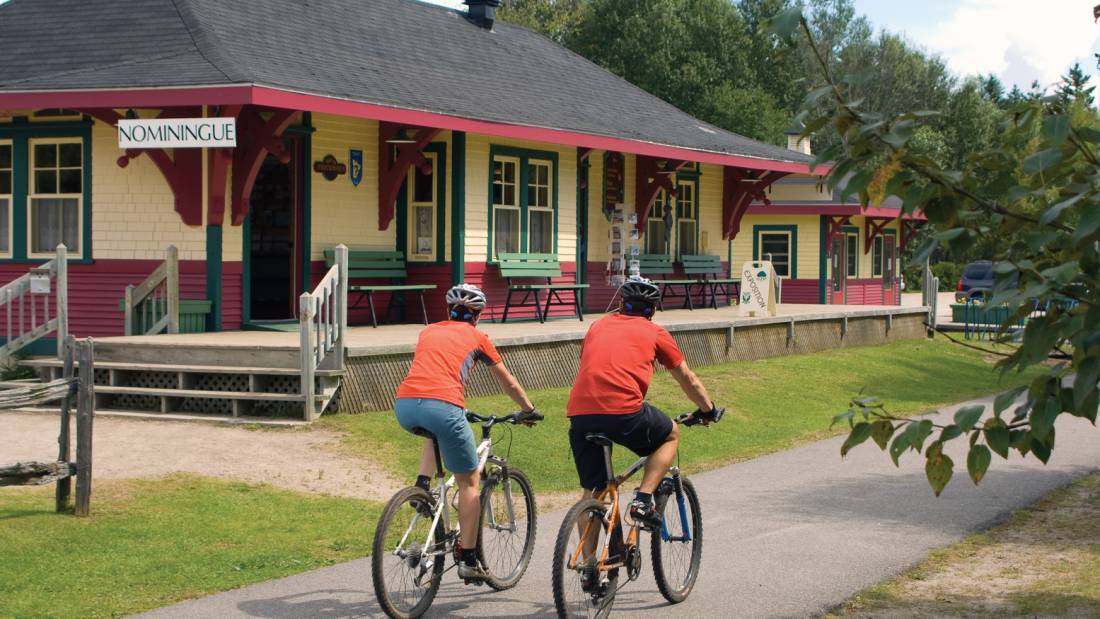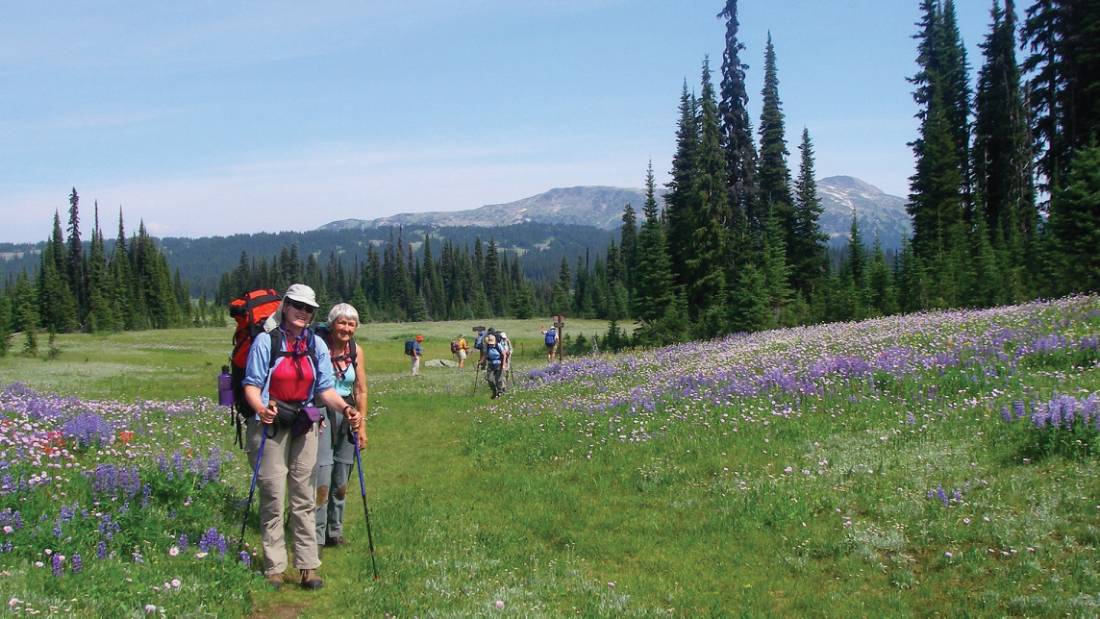
Admiring a picture-perfect coastline in Western Newfoundland | David Gray
Blog home / What is Active Travel (and why you don’t have to fear it)
By Robin Esrock
There are countless myths we need to permanently retire. No, you can’t see the Great Wall of China from space. No, we don’t only use 10% of our brain. No, you don’t need to drink eight glasses of water a day to stay healthy. No, it’s not dangerous to swim after eating, and no, you don’t have to be a fit, hardcore explorer to enjoy a multi-day hike or bike ride.
Active travel involves physical activity, but the level of that physical activity varies widely depending on the trip and the person taking it. Whether you walk in the park or hike for a week, it’s all active travel, and it’s all accompanied by more benefits than just simple exercise. I’ve written about the positive impact of outdoor pursuits on our mental health, as well as the benefit of outdoor adventure on the environment. We’ve covered different types of gear, as having the right gear — in the mountains or at home – makes everything a lot more enjoyable. This is all great, but there are still folks out there thinking, “no, no, I couldn’t possibly do that!” This column is for you, and I know exactly how it feels because I was one of you, too.

When my father retired, we loved the idea of taking on our first multi-day cycling adventure. He’s a walker, and I play the occasional tennis game, but neither of us would consider ourselves as fit, triathlon-types, you know, the folks who run ten kilometres before breakfast. All this made Prince Edward Island such an ideal introduction to the world of a cycling adventure. For starters, Great Canadian Trails (GCT) guided our packing and preparation, which removed a lot of anxious guesswork or online research. That included arranging the bicycles in Charlottetown, complete with panniers (carry bags) for anything we’d need during the day. Since our bags were shuttled ahead, we didn’t have to lug heavy gear, and each day would consist of a leisurely bike ride along a well-marked route. A handy app ensured we never got lost, and our friendly local fixer was just a call away. Yes, my butt let me know it had been on a saddle all day, but stiffness and soreness are mitigated with some stretching, and we both felt ourselves get stronger along the way. When the scenery is this gorgeous and the air this fresh, there’s plenty to distract from the exercise. It’s a world away from a boring week in the gym.

These days, you can opt to do a multi-day bike ride like Prince Edward Island, Le Ptit Train du Nord and the Kettle Valley Heritage Trail on an e-bike, eliminating the few up hills you’ll encounter on these trails, along with any strenuous exercise altogether. That sounds great, but I hear the next worries bubbling up already:
What if I fall and twist an ankle or get hurt?
In the unlikely event that this happens, you do exactly as you do at home. You call for help. A local emergency contact is provided on all GCT trips. They’ll pick you up (and your bike) and get you to safety.
What if I get lost?
Great Canadian Trails' navigation app does not need to be connected to a cell network. It guides you along the path, adding information along the way. On a rail trail, you either go forward to your destination or back to where you started. For a hike, the app eliminates the need for maps and compasses, removing all navigational stress.
What if I get tired?
The itineraries are generous and deliberately conservative with time estimates, allowing plenty of time to rest (or to explore further). Stop, breathe, and enjoy the outdoors. It’s not a race, and you’re not missing anything. The journey really is the destination, so go at your own pace.
What if I pack the wrong gear?
GCT provides an extensive package list, but if you need anything, it’s typically not difficult to arrange or pick something up along the way.
What if I’m not fit enough?
Stiffness decreases as you get fitter along the way. If you can’t manage on the route, call our local contact, and arrangements will be made to give you whatever rest you need.

While there’s plenty of time for well-earned rest, active travel is not a traditional vacation. You’re using your body for transport and your brain to solve any unexpected puzzles along the way. Not knowing exactly what to expect is part of the fun. Weather, trail conditions, spontaneous encounters with people and wildlife are just some of the variables sprinkling magic dust on each day’s journey. Exercise releases endorphins and dopamine, and each day is an accomplishment, a boost for the mind and body. Socially, you’re meeting people in different communities along the way and very often on the same journey you’re having. It’s an opportunity to share stories, trade tips, and forge friendships, knowing you’re all in it together.
Like travel itself, active travel is a fun little bug. Once it sinks its teeth into you, it never lets you go, and it’s difficult to go back. Just one trip will remove any personal doubts and apprehension. As the saying goes, all great journeys start with that single step.
Robin Esrock is the bestselling author of The Great Canadian Bucket List, and The Great Global Bucket List.